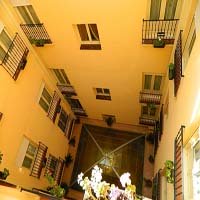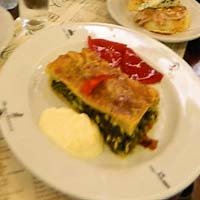Spain Jewelry
Why it's unique and popular - A must have souvenier from your Spain vacations
Much like the Spanish people and their regional and national traditions, Spain’s jewelry is an interesting mélange of different regional, historical and cultural influences. Many of the designs are highly symbolic and inspirational, with the cross and the Christian religion being an extremely popular theme. Intricate Moorish motifs and “good luck” jewelry featuring the “Indalo” (an Andalusian good luck symbol) are also extremely popular.
Many people don’t realize it, but Spain is a major player in the European jewelry market, trailing only Italian, British and Swiss jewelry. Spain’s jewelry is appearing in more and more jewelry shops and boutiques. Currently, Spanish jewelry is some of the most sought-after in the world, but it’s especially popular in the United States, France, Italy, Switzerland, Portugal and the UK. It’s fresh and different, and it reflects the love of life that pervades the Spanish culture.
In part, the popularity of Spanish jewelry can be attributed to its typically high level of craftsmanship. The vast majority of Spain’s jewelry workshops are staffed by fewer than five workers, and they take a great deal of pride in what they create. However, Spanish jewelry is also popular because of its beautiful, often-intricate designs.
In many ways, the intricacy that’s so typical of Spanish jewelry stems from the strong Moorish influence in many parts of Spain. The Moors ruled most of the Iberian Peninsula for many long centuries, and their legacy is still visible in many aspects of Spanish culture, including the complex arabesques and other intricate motifs found so frequently in Spain’s jewelry.
But, the Christian religion has by far been the strongest influence over Spanish jewelry. Much of Spain’s jewelry features a cross, a prayer, or an image that in some way ties it back to Christianity.
Spain’s jewelry is frequently solid silver, but silver and black and gold and black are also common. Some pieces, especially pendants, bracelets and earrings, are studded with colorful semi-precious gemstones like amethyst, rose quartz, garnet or aquamarine. Pearls and coral adorn others.
Some Spanish jewelers (especially the artisans of Toledo) specialize in a unique type of jewelry that’s referred to as “Damascene,” “Damasquinado” or “Damasquino.” Basically, Damascene jewelry involves decorating non-precious metals (often steel) with intricate gold designs. The process was perfected by the Moors and brought with them to Spain, where it has remained virtually the same for centuries. Ornate arabesques, geometric designs, and depictions of flowers and birds typify Damascene jewelry. The underlying background of all Damascene jewelry is black, but the designs themselves are a brilliant gold. The contrast between the gold and black makes Damascene stunning and extraordinary. Toledo produces more Damascene jewelry than any other area in the world.
Spanish jewelry is in high demand. Like the Spanish culture, the country’s jewelry is distinct from any other but influenced by the past. Much of it is symbolic, featuring Christian symbols, ornate Moorish designs or local good luck charms.
Copyright© southern-spain-travel.com All Rights Reserved. Content Protected By DMCA.
Authentic Spain Food
It's true! Get tapas, jamon, olive oil, manchego and chorizo shipped directly from Spain
Get Football Tickets
Click here to buy tickets to Spains Sports events
Book a Hotel






New! Comments
Have your say about what you just read! Leave me a comment in the box below.